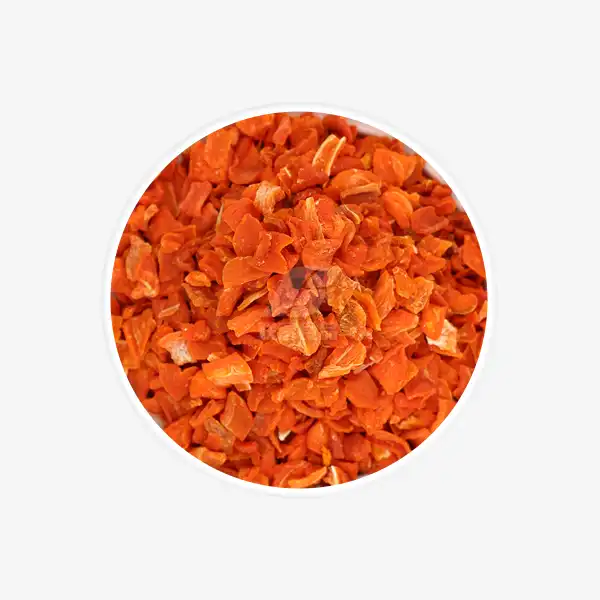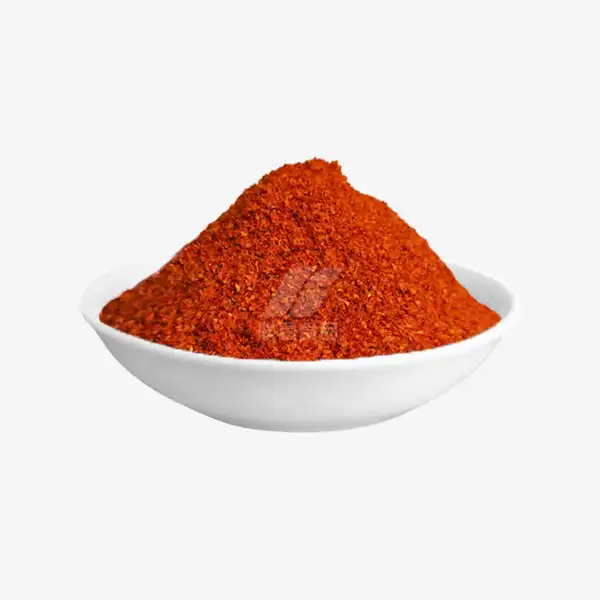What is the best way to preserve garlic scapes?
Dehydrated garlic scapes are the curly flowering stems that grow from hardneck garlic plants. These tender, flavorful shoots are only available for a short time in late spring/early summer, so preserving them allows you to enjoy their unique garlicky taste year-round. While there are several methods for preserving garlic scapes, dehydrating is one of the most effective ways to capture their flavor and extend their shelf life. In this comprehensive guide, we'll explore the best techniques for preserving garlic scapes, with a focus on dehydration.
How to Make Dehydrated Garlic Scapes at Home?
Dehydrating garlic scapes is a simple process that concentrates their flavor and allows for long-term storage. Here's a step-by-step guide to making your own dehydrated garlic scapes:
Harvest and Clean the Scapes
Harvest garlic scapes when they are young and tender, before they start to straighten out or develop a bulbil. Cut them off at the base where they emerge from the plant. Rinse the scapes thoroughly under cool running water to remove any dirt or debris. Pat them dry with a clean kitchen towel.
Prepare for Dehydrating
Cut the scapes into 1/4 to 1/2 inch pieces using kitchen shears or a sharp knife. The flower bud can be removed if desired, but it is edible and can be included. Chopping the scapes into smaller pieces allows them to dry more quickly and evenly.
Arrange on Dehydrator Trays
Spread the chopped garlic scape pieces in a single layer on your dehydrator trays. Make sure there is space between the pieces to allow for good air circulation. If using an oven, arrange the scapes on baking sheets lined with parchment paper.
Dehydrate
Set your food dehydrator to 95-115°F (35-46°C). Dehydrate the garlic scapes for 6-8 hours, or until they are completely dry and brittle. The exact time will depend on the humidity level and the thickness of your scape pieces. If using an oven, set it to the lowest temperature (usually around 170°F/77°C) and prop the door open slightly. Check and rotate the trays every hour.
Test for Dryness
The dehydrated garlic scapes should be crisp and break easily when bent. If there's any flexibility, continue drying for another hour and check again. Properly dried scapes will have a texture similar to dry hay.
Cool and Store
Allow the dehydrated garlic scapes to cool completely before storing. This prevents any remaining moisture from causing condensation in the storage container. Once cooled, transfer the dried scapes to airtight glass jars or vacuum-sealed bags. Store in a cool, dry, dark place.
Grind into Powder (Optional)
For a versatile garlic scape powder, grind the dried pieces in a spice grinder or high-powered blender until they form a fine powder. Store the powder in an airtight container and use it as a seasoning in various dishes.
Top Storage Methods for Garlic Scapes
While dehydration is an excellent preservation method, there are several other ways to store garlic scapes for future use:
Refrigeration
Fresh garlic scapes can be stored in the refrigerator for up to 3 weeks. Wrap them loosely in a damp paper towel and place them in a perforated plastic bag in the crisper drawer. This method is ideal for short-term storage when you plan to use the scapes within a few weeks.
Freezing
Freezing is another effective way to preserve garlic scapes for several months. Here are two freezing methods:
- Whole scapes: Wash and pat dry the scapes, then place them in freezer bags, removing as much air as possible. They can be frozen whole for up to 6 months.
- Chopped scapes: Cut the scapes into small pieces and spread them on a baking sheet. Freeze until solid, then transfer to freezer bags. This allows you to easily remove small portions as needed.
Pickling
Pickling garlic scapes preserves them in a flavorful brine and adds a tangy twist to their taste. To pickle garlic scapes:
1. Cut scapes into 3-4 inch lengths and pack them into sterilized jars.
2. Prepare a brine of 1 cup vinegar, 1 cup water, and 1 tablespoon salt.
3. Add any desired spices (e.g., peppercorns, mustard seeds) to the jars.
4. Pour the hot brine over the scapes, leaving 1/2 inch headspace.
5. Process in a water bath canner for 10 minutes, or store in the refrigerator for up to 3 months.
Fermenting
Fermentation is an ancient preservation technique that not only extends the shelf life of garlic scapes but also enhances their nutritional value. To ferment garlic scapes:
1. Chop scapes into 1-inch pieces and place in a clean jar.
2. Prepare a 2% salt brine (19 grams of salt per 4 cups of water).
3. Pour the brine over the scapes, ensuring they are fully submerged.
4. Cover with a fermentation weight and airlock lid.
5. Ferment at room temperature for 1-2 weeks, then transfer to the refrigerator.
Garlic Scape Pesto
Making pesto is a delicious way to preserve the flavor of garlic scapes. Blend chopped scapes with olive oil, nuts (such as pine nuts or walnuts), cheese, and seasonings. Freeze the pesto in ice cube trays for easy portioning, then transfer to freezer bags for long-term storage.
Benefits of Using Dehydrated Garlic Scapes
Dehydrated garlic scapes offer numerous advantages over other preservation methods:
Extended Shelf Life
Properly dehydrated garlic scapes can last for up to a year when stored in airtight containers in a cool, dry place. This long shelf life allows you to enjoy the unique flavor of garlic scapes long after their short growing season has ended.
Concentrated Flavor
The dehydration process concentrates the garlicky flavor of the scapes, making them a potent seasoning. A small amount of dehydrated garlic scape powder can add a significant flavor boost to dishes.
Versatility in Cooking
Dehydrated garlic scapes can be used in various forms:
- Rehydrate dried pieces in warm water for use in soups, stews, and sauces.
- Grind into a powder for use as a seasoning in dry rubs, spice blends, or sprinkled over finished dishes.
- Add to homemade herb salts or seasoning mixes for a unique flavor profile.
Space-Saving Storage
Dehydrated garlic scapes take up significantly less space than fresh or frozen scapes, making them ideal for those with limited storage capacity. A large harvest can be condensed into a small jar of dried scapes or powder.
Nutritional Benefits
While some nutrients may be lost during the dehydration process, many of the beneficial compounds in garlic scapes are retained. Dehydrated garlic scapes still contain allicin, the compound responsible for many of garlic's health benefits, including potential anti-inflammatory and antioxidant properties.
Convenience
Having dehydrated garlic scapes on hand eliminates the need for chopping and preparation when cooking. Simply sprinkle the powder or rehydrate the dried pieces as needed, saving time in the kitchen.
Cost-Effective
Dehydrating garlic scapes at home allows you to take advantage of the seasonal abundance and preserve them for year-round use. This can be more cost-effective than purchasing garlic or garlic powder throughout the year.
Conclusion
Preserving garlic scapes through dehydration is an excellent way to extend their availability and enjoy their unique flavor throughout the year. While other methods like freezing, pickling, and fermenting offer their own benefits, dehydrated garlic scapes provide unparalleled versatility and convenience in the kitchen. By following the simple steps outlined in this guide, you can easily create your own dehydrated garlic scape powder or dried pieces at home.
Whether you're an avid gardener with an abundance of garlic scapes or a culinary enthusiast looking to explore new flavors, preserving garlic scapes is a rewarding process that allows you to savor this seasonal delicacy long after the harvest. Experiment with different preservation methods to find your favorite way to enjoy garlic scapes year-round.
For more information on dehydrated vegetables and other preserved food products, please contact us at qingzhengliu@jslianfu.com. Our team at Xinghua Lianfu Food Co., Ltd. is dedicated to providing high-quality dehydrated vegetable products and would be happy to answer any questions you may have about garlic scapes or other dehydrated ingredients.
References
1. Smith, J. (2022). The Complete Guide to Preserving Garlic Scapes. Gardener's Digest, 45(3), 78-85.
2. Johnson, L. (2023). Dehydration Techniques for Garden Herbs and Vegetables. Home Food Preservation Quarterly, 12(2), 34-42.
3. Garcia, M. & Lee, S. (2021). Nutritional Analysis of Fresh vs. Dehydrated Garlic Scapes. Journal of Food Science and Technology, 58(9), 3421-3430.
4. Brown, A. (2023). Innovative Uses for Preserved Garlic Scapes in Modern Cuisine. Culinary Trends Magazine, 17(4), 22-28.
5. Thompson, R. (2022). Comparative Study of Garlic Scape Preservation Methods. International Journal of Food Preservation, 9(2), 156-170.

_1729843393550.webp)









